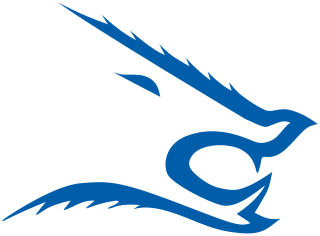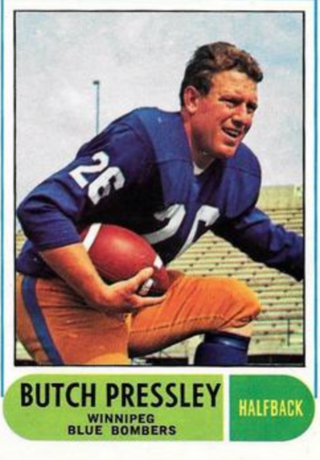
The Lone Star Conference (LSC) is a college athletic conference affiliated with the National Collegiate Athletic Association (NCAA) at the Division II level. Member institutions are located in the South Central states, with schools in Texas, Oklahoma, and New Mexico, with two members in the Pacific Northwest states of Oregon and Washington competing as affiliates for football only.

Darrell Ray Green is an American former professional football player who was a cornerback for the Washington Redskins of the National Football League (NFL) for 20 seasons. Considered to be one of the greatest cornerbacks and fastest players in NFL history, he played college football for the Texas A&M–Kingsville Javelinas and was drafted by the Redskins in the first round of the 1983 NFL draft. Green played in 295 games with Washington, winning Super Bowls XXII and XXVI, before retiring in 2003. He was named the 1996 NFL Man of the Year, inducted into the Pro Football Hall of Fame in 2008, and included on the NFL 100th Anniversary All-Time Team.

John Anthony Randle is an American former professional football player who was a defensive tackle for eleven seasons for the Minnesota Vikings and three seasons for the Seattle Seahawks of the National Football League (NFL). He was a six-time first-team All-Pro and seven-time Pro Bowler. Since becoming an official stat in 1982, his 137.5 sacks rank tenth, tied with Richard Dent, and first among defensive tackles. On February 6, 2010, he was voted into the Pro Football Hall of Fame. He played college football for the Trinity Valley Cardinals and the Texas A&I Javelinas, and was signed by the Vikings as an undrafted free agent after the 1990 NFL draft. He is considered one of the greatest undrafted players of all time.

Texas A&M University–Kingsville is a public research university in Kingsville, Texas. It is the southernmost campus of the Texas A&M University System. The university developed the nation's first doctoral degree in bilingual education. It is classified among "R2: Doctoral Universities – High research activity" and accredited by the Southern Association of Colleges and Schools (SACS).

Earl Christopher Dotson is an American former professional football player who was a offensive tackle in the National Football League (NFL). He was selected in the third round of the 1993 NFL draft by the Green Bay Packers after playing college football for Texas A&M–Kingsville, formerly Texas A&I-Kingsville.
Kevin Ray Dogins is an American former professional football player who was a guard in the National Football League (NFL) for the Tampa Bay Buccaneers and Chicago Bears. He also was a member of the Tampa Bay Storm in the Arena Football League (AFL). He played college football for the Texas A&M–Kingsville Javelinas.

The Texas A&M–Kingsville Javelinas are the athletic teams that represent Texas A&M University–Kingsville (TAMUK) in Kingsville, Texas, in intercollegiate sports at the Division II level of the National Collegiate Athletic Association (NCAA), primarily competing in the Lone Star Conference (LSC) since the 1954–55 academic year.

The Texas A&M–Kingsville Javelinas football program is the intercollegiate American football team for the Texas A&M University–Kingsville located in the U.S. state of Texas. The team competes in the Division II and is a member of the Lone Star Conference. The school's first football team was fielded in 1929. The team plays its home games at the 15,000-seat Javelina Stadium.
Eldridge Small was an American professional football player who was a cornerback for the New York Giants of the National Football League (NFL) from 1972 to 1974.

William Neel Pressley, known professionally as Butch Pressley, is a former Canadian football player who played for the Edmonton Eskimos and Winnipeg Blue Bombers. He played college football at the Texas A&I University–Kingsville and was inducted into the Javelina Hall of Fame in 1977. Pressley was the former president and co-owner of Timco Services.
The East Texas A&M Lions football team is the college football program representing East Texas A&M University. The school competes in the Southland Conference (SLC) in Division I FCS of the National Collegiate Athletic Association (NCAA). Prior to joining the Southland, they competed in the Lone Star Conference of Division II. The East Texas A&M football team plays its home games at Ernest Hawkins Field at Memorial Stadium on the university campus in Commerce, Texas. On December 16, 2017, East Texas A&M won its first NCAA Division II national championship, by defeating West Florida, 37–27, in Kansas City. The Lions recorded a perfect record in 1934, won the NAIA National Championship in 1972, and have amassed a total of 24 LSC conference championships since joining as a charter member in 1931. On September 28, 2021, the university accepted an invitation from the Southland Conference, moving the university's athletics programs up to the NCAA Division I level. This ended a 90-year affiliation with the Lone Star Conference, as East Texas A&M was the last founding member remaining. The football team began competing at the NCAA Division I Football Championship Subdivision level starting with the 2022 season.

The 2017 Texas A&M–Kingsville Javelinas football team represented Texas A&M University–Kingsville in the 2017 NCAA Division II football season. They were led by third-year head coach Daren Wilkinson. The Javelinas played their home games at Javelina Stadium and were members of the Lone Star Conference.
Billy Ray Minor Jr is a former American football wide receiver. He was in training camp with the Philadelphia Eagles NFL and played in the Arena Football League for the Dallas Texans in1993. He played college football at East Texas State University where he was a 4-year letterman, 2 time All Lone Star Conference performer, Conference Champion, member of 2 National quarter-finalist teams, and finished his career as a top 5 receiver in program history in receptions and receiving yards. He was inducted with the 1990 team in 2013 and individually in 2023.
The 1959 Texas A&I Javelinas football team was an American football team that represented the Texas College of Arts and Industries as a member of the Lone Star Conference during the 1959 NAIA football season. The team compiled a 12–1 record, defeated Lenoir Rhyne in the Holiday Bowl, and won the NAIA Football National Championship. It was the first of seven NAIA Football National Championships won by the school.
The 1969 Texas A&I Javelinas football team was an American football team that represented the Texas College of Arts and Industries as a member of the Lone Star Conference during the 1969 NAIA football season. In its 16th year under head coach Gil Steinke, the team compiled an 11–1 record, tied for the Lone Star Conference championship, and defeated Concordia–Moorhead in the Champion Bowl to win the NAIA national championship. The team's only setback was a loss to Sul Ross.
The 1970 Texas A&I Javelinas football team was an American football team that represented the Texas College of Arts and Industries as a member of the Lone Star Conference during the 1970 NAIA Division I football season. In its 17th year under head coach Gil Steinke, the team compiled an 11–1 record, won the Lone Star Conference championship, and defeated Wofford in the Champion Bowl to win the NAIA national championship. The team's only setback was a loss to Angelo State.
The 1974 Texas A&I Javelinas football team was an American football team that represented the Texas College of Arts and Industries as a member of the Lone Star Conference during the 1974 NAIA Division I football season. In its 21st year under head coach Gil Steinke, the team compiled a perfect 13–0 record, won the Lone Star Conference championship, and defeated Henderson State in the Champion Bowl to win the NAIA national championship.
The 1975 Texas A&I Javelinas football team was an American football team that represented the Texas College of Arts and Industries as a member of the Lone Star Conference during the 1975 NAIA Division I football season. In its 22nd year under head coach Gil Steinke, the team compiled a perfect 12–0 record, won the Lone Star Conference championship, and defeated Salem in the Champion Bowl to win the NAIA national championship.
The 1979 Texas A&I Javelinas football team was an American football team that represented the Texas College of Arts and Industries as a member of the Lone Star Conference during the 1979 NAIA Division I football season. In its first year under head coach Ron Harms, the team compiled a 12–1 record, won the Lone Star Conference championship, and defeated Central State (Oklahoma) in the Palm Bowl to win the NAIA national championship.

The 2015 West Texas A&M Buffaloes football team represented West Texas A&M University during the 2015 NCAA Division II football season as a member of the Lone Star Conference (LSC). The Buffaloes were led by third-year head coach Mike Nesbitt. The team played its home games at Kimbrough Memorial Stadium in Canyon, Texas.








